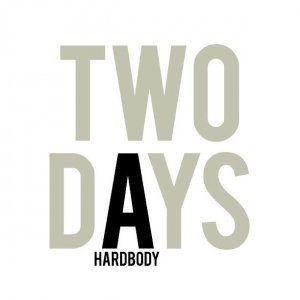Running Twice a Day: Is It a Good Idea?

Think back to high school, the infamous two-a-day workouts. Common in football and competitive swimming, other athletes have picked up on this trend. When a group of runners is asked if they think running twice a day is a good idea the answers are varied.
“Junk miles,” is one response. A second runner might say, “It’s a great way to add mileage with a lower risk of injury!” .A third runner actually said, “Following to see who has time to run twice in a day?” So since the jury is out…. I will let you decide what you see after examining the evidence.
The Elites Do It
If you delve into the training plan of an elite runner, you will often see double workouts. True, sometimes these are running at one time and weight lifting later in the day. However, you will also see double running workouts.
For elites, the twice-daily run is an integral component of their running. Can the “average runner” pull off a two-a-day? Should they?
When Is It Needed?
The general consensus is that you should consider running twice a day if you are only taking one rest day each week and you are already running high weekly mileage. If you are taking two or three days off each week, your body would be far better served adding run days than adding a second run to your “on days.”
Benefits of Running Twice a Day?

Running doubles is a good way to increase your weekly mileage. Running more mileage can increase your efficiency and endurance as a runner. Plain and simple, to run faster, you do need to run more; ergo, you can logically conclude that your times should improve.
Doubles for Very Specific Reasons
When researching this topic, one thing that kept coming up was event specific double runs. Individuals training for a Ragnar will use double run days to help prepare. Not sure what a Ragnar is? It’s an event where you get together with 9 (10 athletes including you) of your closest running buddies, fill two vans, and proceed to relay across a 200-mile course.

Each athlete will run three times, with time off to rest between. Of course, you’re resting in a van or in a tent or running along the course handing water to your bestie. So really, it’s a lot of time on feet with very little sleep. Many people who do Ragnars training use two a day runs to help prepare you for running hard on tired legs.
Individuals training for different types of relays also turn to doubles as they prepare. Increasing in popularity are events like Door County’s Fall Fifty in beautiful Door County, Wisconsin. Teams of two to five runners take turns running the fifty-mile course. Again, these athletes often prepare by running easy doubles.
Recovery
Doubles can also offer your body a recovery boost. First, running 10 miles is harder on the body than running 5 miles. Running five miles twice (with eight to ten hours in between runs) gives your body bounce back time. You have time to rest and refuel.
We could talk about glycogen, enzyme activity, fat oxidization, and other scientific mumbo jumbos, but do any of us really need to understand all of that? When push comes to shove, the science points to all of these things helping the runner to get fit faster. And who doesn’t want to make gains more quickly?
Management of Long Training Days
If you’re an elite, running is your job. If you’re a soccer mom who works a full-time job, you have to manage your time differently. One running buddy of mine reports that as she works to increase mileage, she sometimes struggles to fit everything in. Sarah Wiliarty reports, “Right now I am squeezing in 9 miles on a lot of Thursdays. I have exactly enough time to get my daughter off to school, crank out nine miles, shower and get to work on time.”

“I added one double day a week in Chicago training, partly as an experiment, largely a running friend’s idea. It turns out I loved it!”. According to Wiliarty, otherwise known as Professor Badass, running a double one day a week helps her add mileage as well as clearing her head after a long day at work. Turns out she’s better at the whole wife and mom thing when she can leave the days stress on the pavement!
How Do Elites Split it Up?
Most elites have a longer quality run in the morning with a shorter, recovery run in the afternoon. This is usually the tactic the runners I have dubbed Mere Mortals also follow. However, the only hard, fast rule is not to run two hard efforts on the same day.
Looking at elite training schedules, another way to split things is to make the hard days very hard and the easy days super easy. Kipchoge, for example, maintains a 4:16 marathon pace. Yup, that is his pace for 26.2 miles. His super easy running day pace? Eight-minute miles.
So next time you ask yourself, “Are these slow miles worth it?” The answer is a resounding yes.
Runner Routine?
This can be a positive or a negative, depending on your slant. If you religiously warm-up well, foam roll, stretch after and abide by a running-related routine for every jaunt, you are now doing this twice on some days. That’s the positive. The negative? You’re doing it twice a day. Jamming more into an already busy schedule.
Who Can Benefit?
According to McMillian Running, a reputable source in the running community, many people can benefit from doubles. McMillian does not just tout the value of doubles to high mileage running. He sees it as a good idea for some new mileage runners.
What is a new mileage runner? Someone recently adding miles and perhaps struggling a bit with the transition. McMillian sees doubles as a nice transition piece for these athletes.
McMillian also encourages older or injury-prone runners to try double run days. Using this advice, some avid runners who were struggling to run 90 minutes now split their workout into a 60 minute morning and 30-minute early evening workout with no ill effects.
NYC Running Coach Daphne Matalene brought up a great point that I would not have considered. Planning to run doubles forces you to think about nutrition all day long. I must have looked confused or paused a bit long because she added, “If you reward yourself with a donut after a morning workout (and I AM PRO DONUT!) think how that is going to make you feel when you do the whole thing over again at 5pm?!”
Check. Coach Daphne. Anyone trying to hone in on the nutritional piece can benefit from two-a-days.
Negatives of Running Doubles?
First of all, it takes more time. Hear me out. You need to dress to work out, clean up, redress and go about your day. Assuming you are not able to stay at home all day and relax, you probably head off to work or raise kids or do whatever awesome epicness you engage in. Then, after engaging in said epic activities, you need to change into more workout clothes, complete the workout, then change again.
More laundry. More time spent on hygiene. More rushing from one activity to another. Did I mention more laundry?
When you choose to run some doubles, your rest days need to be sacred. You don’t get to skimp on this anymore.
Worth Noting…
One place everyone agrees is that you should not split the weekly long run unless absolutely necessary, and then it should not be done repeatedly. Note to self: splitting that twenty miler into two-tens week after week is not a good life choice. At least not if you plan to be ready on race day.
Also, this type of training is difficult to pull off if you aren’t achieving balance in your life. If your purpose is to maintain high mileage, you need to be sure you are sleeping enough and eating properly.
Is running twice in a day a good idea? This writer and runner firmly believes that doubles can benefit most runners. Try it. Maybe it will work for you?
Sources
Latest Articles
 Is Running on a Treadmill Easier Than Running Outside?Runners have their own preferences, whether it is treadmill running, running outside on the road, or exploring trails. So...
Is Running on a Treadmill Easier Than Running Outside?Runners have their own preferences, whether it is treadmill running, running outside on the road, or exploring trails. So... Is It OK to Use Trail Running Shoes on the Road?While trail running shoes can be used on roads, especially in situations where a runner encounters mixed terrains or pref...
Is It OK to Use Trail Running Shoes on the Road?While trail running shoes can be used on roads, especially in situations where a runner encounters mixed terrains or pref... How to Fix Sore Quads After Running?Rest, ice, gentle stretching, and over-the-counter pain relievers can help soothe sore quads after running. Also, ensure ...
How to Fix Sore Quads After Running?Rest, ice, gentle stretching, and over-the-counter pain relievers can help soothe sore quads after running. Also, ensure ... 10 Fruits With The Most Electrolytes to Replace Sports DrinksThese fruits are high in electrolytes such as potassium, magnesium, and calcium, essential for hydration, muscle function...
10 Fruits With The Most Electrolytes to Replace Sports DrinksThese fruits are high in electrolytes such as potassium, magnesium, and calcium, essential for hydration, muscle function...

